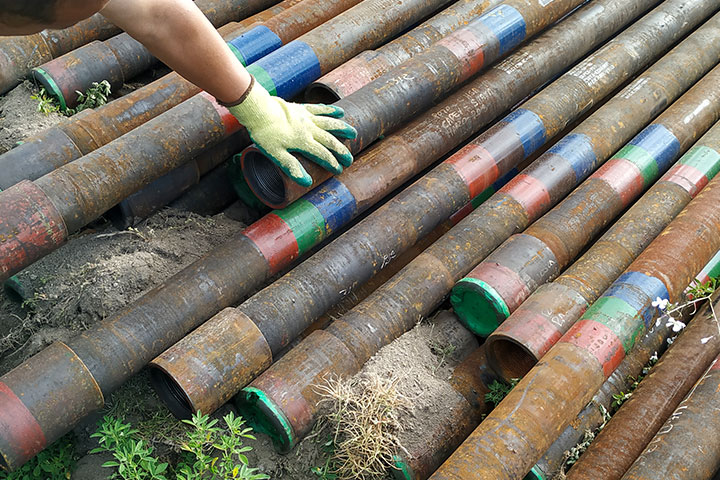Ever noticed a big crack running through your driveway? Annoying, right? Concrete is strong, but it’s not invincible. Over time, it can crack, making your once-smooth driveway or sidewalk look old and worn.
To prevent cracks in your concrete driveway or sidewalk, follow these key steps:
- Use high-quality concrete mix.
- Ensure proper installation with control joints.
- Keep up with sealing and maintenance.
- Avoid heavy loads and rapid temperature changes.
- Manage water drainage effectively.
In this guide, we’ll go over why concrete cracks, how to prevent them, and simple maintenance tips that can help keep your driveway and sidewalk looking great for years.
Why Does Concrete Crack?
Concrete cracks for a variety of reasons, but here are the most common ones:
1. Shrinkage
As concrete dries, it shrinks. If it shrinks too quickly, cracks can form. This is especially common in hot, dry weather.
2. Improper Installation
If the concrete is poured too thin, lacks proper reinforcement, or is not mixed correctly, it will crack sooner rather than later.
3. Temperature Changes
Concrete expands in heat and contracts in cold. Without proper control joints, this movement can cause cracks over time.
4. Heavy Loads
Parking heavy vehicles or placing large objects on your driveway can stress the concrete beyond its limits.
5. Water Damage
Excess water under or around the concrete can cause the soil to shift, leading to cracks.
How to Prevent Cracking
1. Use a High-Quality Concrete Mix
Not all concrete is the same. Using a mix with the right water-to-cement ratio and strength rating will help prevent early cracking. Talk to your contractor about using a high-quality mix suited for driveways.
2. Install Control Joints
Control joints are planned breaks in the concrete that allow it to expand and contract without random cracking. These should be spaced correctly based on the size of your driveway or sidewalk.
3. Seal Your Concrete Regularly
Applying a quality concrete sealer every few years creates a protective barrier that keeps moisture out, reducing the risk of damage and helping your driveway last longer.
4. Avoid Placing Heavy Loads in One Spot
Avoid parking heavy vehicles, trailers, or dumpsters in the same area for long periods. This can cause stress points in the concrete and lead to cracks.
5. Control Water Drainage
Water pooling around your driveway or sidewalk is bad. Make sure your concrete is slightly sloped to direct water away. Ensure you have an effective drainage system in place to stop water from washing away the soil beneath the concrete.
6. Properly Cure the Concrete
Curing involves keeping the concrete damp for at least a week after pouring, allowing it to strengthen and minimizing shrinkage-related cracks.
Quick Tip: Avoid pouring concrete in extreme temperatures. The best range is between 50°F and 70°F for optimal results.
7. Address Small Cracks Quickly
Even with careful maintenance, minor cracks may develop. Tackle them early using a concrete patching compound to prevent them from worsening.
Common Causes & Solutions for Concrete Cracks
| Cause | Prevention Method |
| Shrinkage | Use a proper mix & cure slowly |
| Heavy Loads | Distribute weight evenly |
| Water Damage | Improve drainage & seal concrete |
| Temperature Changes | Use control joints & seal cracks |
| Poor Installation | Hire experienced professionals |
Conclusion
Cracks in concrete are common, but they don’t have to ruin your driveway or sidewalk. By using the right mix, installing control joints, sealing regularly, and managing water drainage, you can keep your concrete in great shape for years.
Taking care of small cracks early can also save you from bigger headaches down the road. With just a little effort, your driveway and sidewalk can stay smooth and strong.
Frequently Asked Questions
How often should I seal my concrete driveway?
Every 2-3 years, or more often, if you live in an area with extreme weather conditions.
Can I fix the cracks myself?
Yes! Small cracks can be filled with a concrete patching compound. Larger cracks may require professional help.
What’s the best time of year to pour concrete?
Spring and fall are ideal since the temperatures are moderate. Avoid pouring in extreme heat or cold.
Why do control joints matter?
Control joints help prevent random cracking by allowing the concrete to expand and contract safely.
Is it possible to completely prevent cracks?
Not entirely, but following proper installation and maintenance tips can greatly reduce the risk of major cracks forming.


